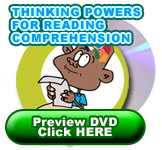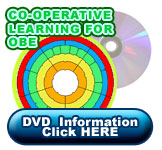Balanced Language Approach to Literacy
Implementing the Balanced Language Approach to Literacy for CAPS
The South African Curriculum and Assessment Policy Statement (CAPS) for Language is a welcome synthesis of a variety of approaches to teaching language literacy. The Balanced Language Approach (BLA) attempts to resolve the vigorous debate of how best to teach reading: the “Phonics Approach” or the “Whole Language Approach.” BLA recognizes that one approach does not meet all learning needs nor can it address all aspects of language acquisition and literacy. The BLA is an attempt to integrate the two approaches.
How the Balanced Language Approach to Literacy is implemented is critical for improving classroom teaching and learning achievement. The BLA presents a shift in how we view literacy, from being a “linguistic process” to being a “people process.” The driving force behind literacy is to express oneself and to connect with others in ways that meet basic social and emotional human needs. Literacy is about giving and receiving communication, involving oral and written forms of language and visual representations. This shift toward enabling people to communicate in meaningful ways is at the core of successful implementation of the Balanced Language Approach. It recognizes the learner’s desire and need to communicate as the key factor in developing literacy.
A close look at the CAPS language document reveals a curriculum that addresses the components of language acquisition (i.e. what to teach: the CONTENT) as well as the essential elements of literacy instruction (i.e. How to teach: the PROCESS). However, they are presented as disparate elements and it is up to each educator to integrate them into a coherent daily teaching programme. This short document and the attached framework are intended to pull these separate elements together into a cohesive structure for classroom teaching and the successful implementation of the Balanced Language Approach to Literacy.
Integrating Content and Process in the Balanced Language Approach
The BLA presents a balance within and between each aspect of the curriculum: The Content which refers to the components or “concepts” of language acquisition and the Process which refers to the essential elements of literacy instruction.
The CONTENT: What we teach needs to address all the components of language acquisition in a balanced way so that people develop the full range of competences to express and receive oral and written forms of the language. The CAPS Language Document refers to these components as concepts (a) LISTENING, (b) SPEAKING, (c) READING (making meaning) AND PHONICS (decoding and encoding skills), (d) WRITING and HANDWRITING. The THINKING STRATEGIES needed to comprehend oral and written language and to express oneself coherently are incorporated into each of these concepts. Developing the cognitive processes for complex thinking is fundamental to reading, writing and learning. The motivation to engage with these competences is the social and emotional need to make personal meaning out of one’s life and communicate effectively.
The PROCESS: How we teach each of these components or ‘concepts’ of literacy also needs to be in balance. CAPS refer to a number of essential elements in instruction, all of which need to be considered when planning every lesson and learning activity:
- Classroom management of group configuration: Successful teaching enables learners to work in different group configurations throughout the day. These include whole class teaching as well as learners interacting in pairs, groups or working alone.[1]
- Modes of learning: It is essential that every learner spends significant amounts of time actively thinking, speaking, reading and writing. Using well-designed and structured pair and group work ensures productive interaction and the construction of personal meaning of the curriculum content. One is reminded that every child needs numerous opportunities to process new information and speak their thoughts, since talking is crucial for ‘re-wiring’ the brain’s neural pathways, the biological evidence of learning. Classical instruction is most successful when it is frequently interspersed with peer-to-peer interaction to process the new information.
- Instructional strategies that balance ‘teacher-directed’ and ‘learned-directed’ learning activities that focus on:
- Words and Sentence Level Work to develop decoding and encoding skills, conventions of print, syntax (grammar) and semantics (vocabulary and contextual cues for making meaning).
- Shared and Guided Reading of authentic texts for the direct instruction of comprehension strategies. During this element of instruction, learners get to witness and practice the roles that good readers perform: Code Breaker – decoding the words in the text and their meaning; Meaning Maker – interacting with the text to make personal meaning using a variety of complex thinking strategies; Text User – deciding how to use the text and the meaning made with the text, e.g. the purpose for reading and how to express what is learned; and Text Analyst – analysing the text with a ‘critical eye’ and assessing author’s implied message.
- Shared and Guided Writing for self-expression and learning. Learners both witness and practice the competences that good writers use. In “shared writing” the teachers holds the pen and together with the class compose a common text. In “guided writing” the learners hold the pen and practice expressing themselves and making meaning from what they are learning.
- Independent Reading with self-selected texts. Free choice of what to read (and write) is essential for learners to develop a love of reading, writing and learning.
When we view literacy as a “people process” that enables needs-satisfying self-expression and communication with others, we can successfully and easily integrate all the components of literacy and the elements of instruction into cohesive learning experiences. A framework to teach the Balanced Language Approach to Literacy is provided to assist in this integration. It ensures that the learner is at the heart of literacy development. [2]
[2] The new teaching tool Sebezaphone * enhances learners’ ability to master the competences that good readers and writers use. For more information *Click here Sebezaphone and the Balanced Language Approach to Literacy*
A Framework to Teach an Integrated Balanced Language Approach to Literacy
This framework integrates the various concepts and principles presented in the South African Education Policy Statements (CAPS ) and Foundations for Learning. It ensures an integrated balance between what to teach and how to teach for language literacy. This framework places the teaching of literacy into four main focus areas. Each area is to be directly taught in equal amounts of time, approximately 30 minutes each on a daily basis. The components or ‘concepts’ of literacy CONTENT and the essential elements of the instructional PROCESS are integrated within each of the four focus areas. The words written in UPPER CASE are the ‘concepts’ referred to in the CAPS document. The essential elements of instruction and learning are written in italics. Planning lessons with these four focus areas in mind enables educators to create cohesive lessons that enable learners to productively interact and develop literacy for meaningful communication. (*CLICK HERE for workshops and Professional Development: Succeeding with CAPS
(1) Words and Sentence Level Work: PHONICS and other ‘bottom-up strategies’: Decoding skills: recognizing sounds for letter patterns, working out unknown words, fluency in reading, vocabulary development, using contextual and syntax (grammar) cues; encoding skills: spelling
a) Whole class (teacher directed with co-operative Learning structured pair/group work: LISTENING, SPEAKING, WRITING, THINKING)
b) Doing a Word Wall using Multiple Intelligences, practice HANDWRITING to write words
c) Word attack strategies
d) Pair and groupwork (learner-directed) Learners use Word Wall Words to create riddles, rhymes, spell other words in Co-operative Learning pairs/groups.
(2) THINKING Strategies to make Meaning and Comprehending Text: learners apply strategic ‘thinking powers’ to activate schema, connect, ask questions, visualise, infer, synthesise/transform knowledge, monitor comprehension and apply fix-up strategies to better comprehend and enjoy reading.
a) Shared Reading: Whole class (teacher-directed instruction and structured pair work)
- Teacher thinks out loud to model how she interacts with text to make meaning
- Pair work: LISTENING, SPEAKING, WRITING, and THINKING.
b) Guided Reading: Teacher works in small ability groups to develop phonetic awareness, word attack skills and targeted thinking and comprehension strategy.
c) Pair/Small Group work: (learner-directed) Learners share their connections, questions, visualisations, inferences, transformations (changes in understanding, thinking, and knowledge with peers in Co-operative Learning groups.
d) Individual work: Learners interact with the text, capturing their thoughts triggered by the text. Learners write personal responses to text.
(3) WRITING for self- expression, creativity and learning
a) Whole class teaching (teacher-directed classical instruction with structured
pair and group work):
- Teacher models how s/he composes a piece of writing using “Think Alouds”. Learners make constructive comments for editing
- Shared Writing: Teacher holds pen and writes common text with learners
- LISTENING, SPEAKING, WRITING: All learners respond to teacher-directed questions in Co-operative Learning pair and group work.
a) Guided Writing: Teacher-directed small groups, learners hold pen
b) Pair/Small Group work: (learner-directed) Working together learners brainstorm ideas, write joint text, share individual writing, edit each other’s work for specific areas: i.e. correct spelling of Word Wall Words and limited number of writing conventions
c) Individual work: learners write; HANDWRITING applied to final draft.
(4) INDEPENDENT READING with Self-Selected Texts: DEAR: Drop Everything And Read. Learners apply skills for gaining information from the text (bottom-up strategies) and active thinking in response to text (top-down strategies).
a) Learners apply phonics and word attack strategies to work out unknown words
b) Learners apply targeted Thinking Strategy: e.g. making connections, inferences, visualising, asking questions, monitor understanding and transformations in thought
c) Learners interact with text using “post-it” notes to mark the spot in the text that triggered a thought.
d) Learners talk /write about their thoughts triggered by text


